Don’t forget to “de-bug” your antenna.
The previous QFH antenna was short-lived and was replaced by the Hentena (3rd generation),
but after leaving it installed outdoors for a while and taking it indoors to dismantle it, a big mess happened.
It was… flies. A dozen of flies came out of the VP16, the QFH boom, like a Trojan horse, and scattered throughout my house.
It took two days before I was able to get rid of them completely.
Then I understood why commercially available UHF Yagi antennas had caps on each element even though the elements are so short….
First, heat a 4mm diameter copper pipe on the stove, then wrap it around a glass bottle with a diameter close to the finished diameter and bend it.
This is then cut to the required loop length.
I would normally measure the circumference at the center line, but since this is not possible, I use a ribbon scale to measure the inner and outer diameters and adjust the average.
This will create enough copper pipe for 10 directors, 1 radiator, and 1 first reflector in a “C shape that is as close to O as possible”.
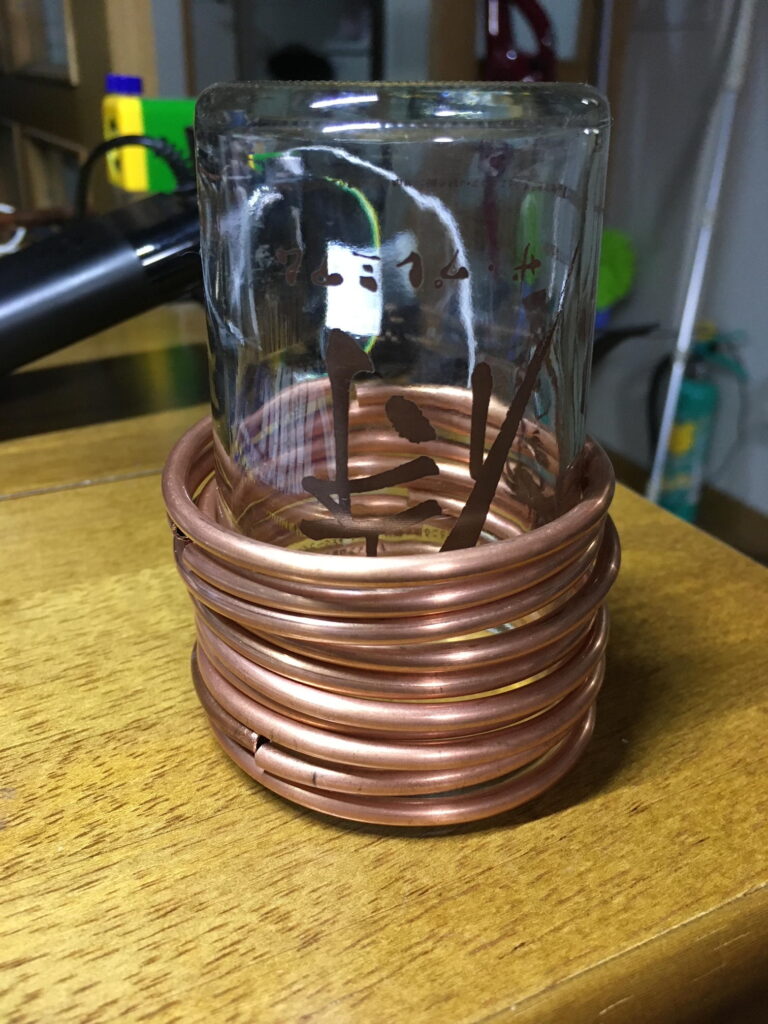
….It was a bottle of Samurai Pudding.
Next is the boom.
I used 10mm diameter copper pipe, but I had to drill precisely aligned holes on both sides of the 12 pipes.
However, I don’t have a drill press with a slide table, so I made a “pattern” based on what I learned about with the QFH antenna earlier.
I printed it out at full size using the free CAD software.
Taking into consideration the thickness of the paper and the glue allowance, I drew it at the equivalent of 11mm diameter, which was just right.
I stuck this to the copper pipe with glue, and drilled holes in it.
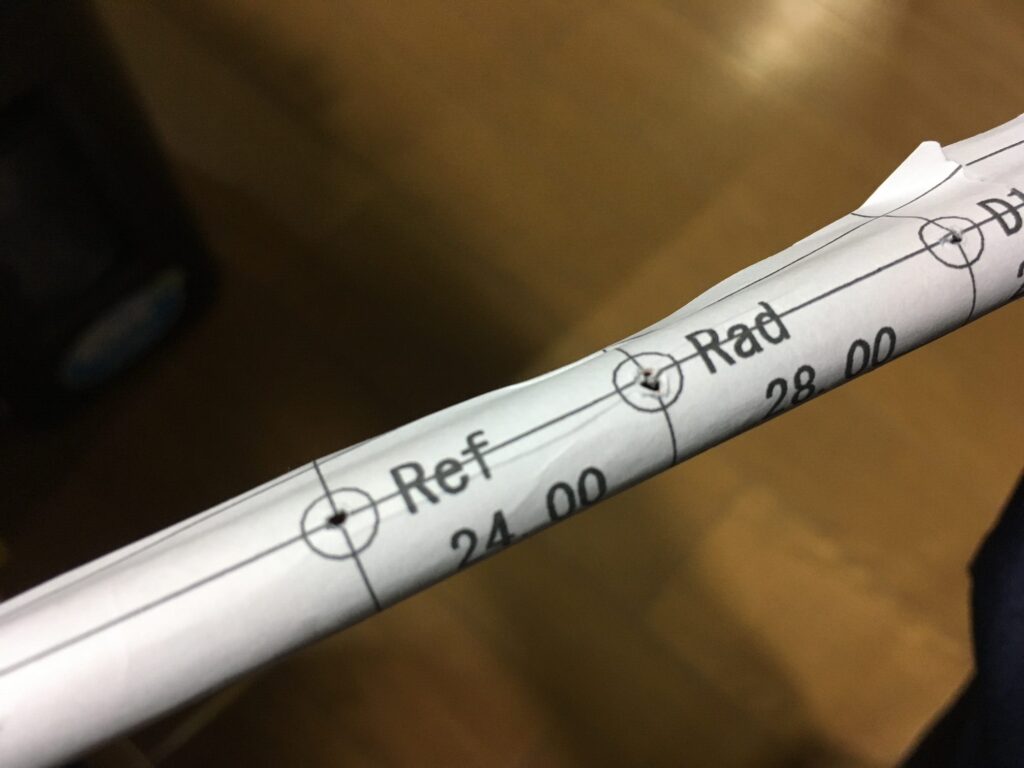
Pass the element through here, and connect both ends to a sheath made of copper pipe one size smaller, cut to about 5 mm, and solder it in place.
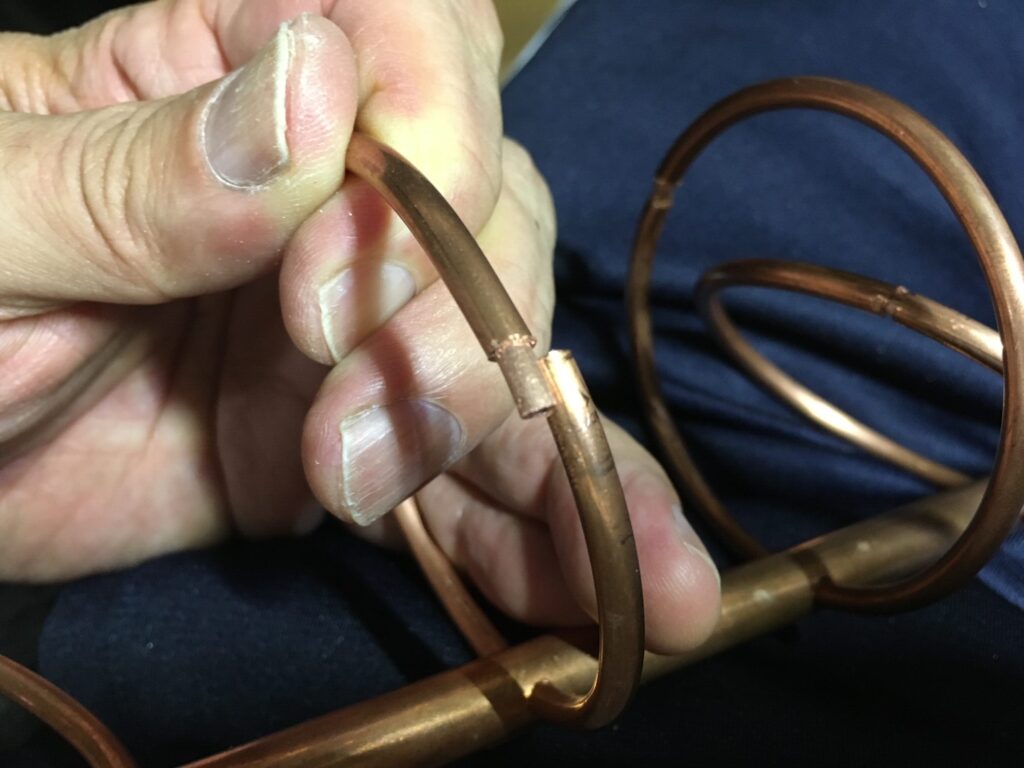
I made sure the cut in the director element was inside the boom pipe, and also secured it in place with solder.
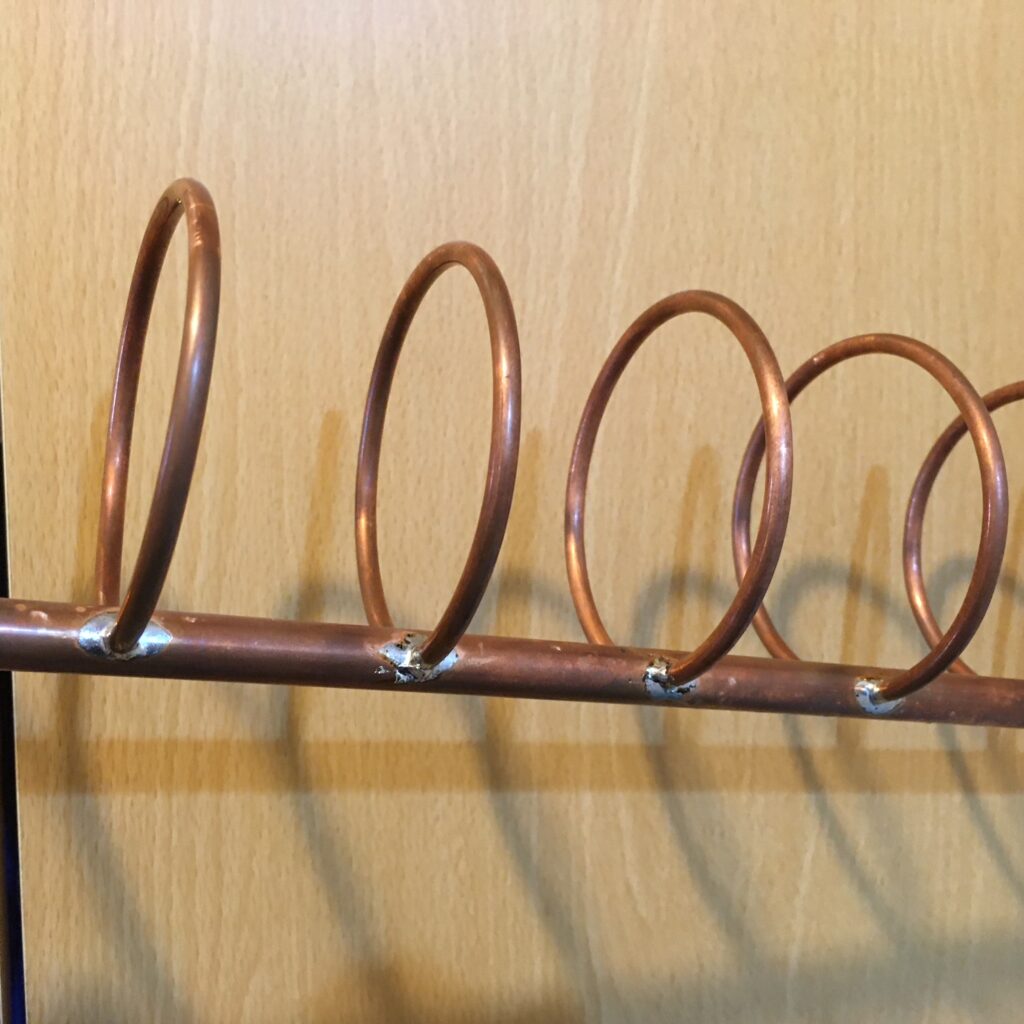
The radiator has the gap on top and the coaxial cable is directly connected.
The last part is the second reflector.
A punched aluminum composite plate is cut out and attached to a bracket made of cut copper plate.
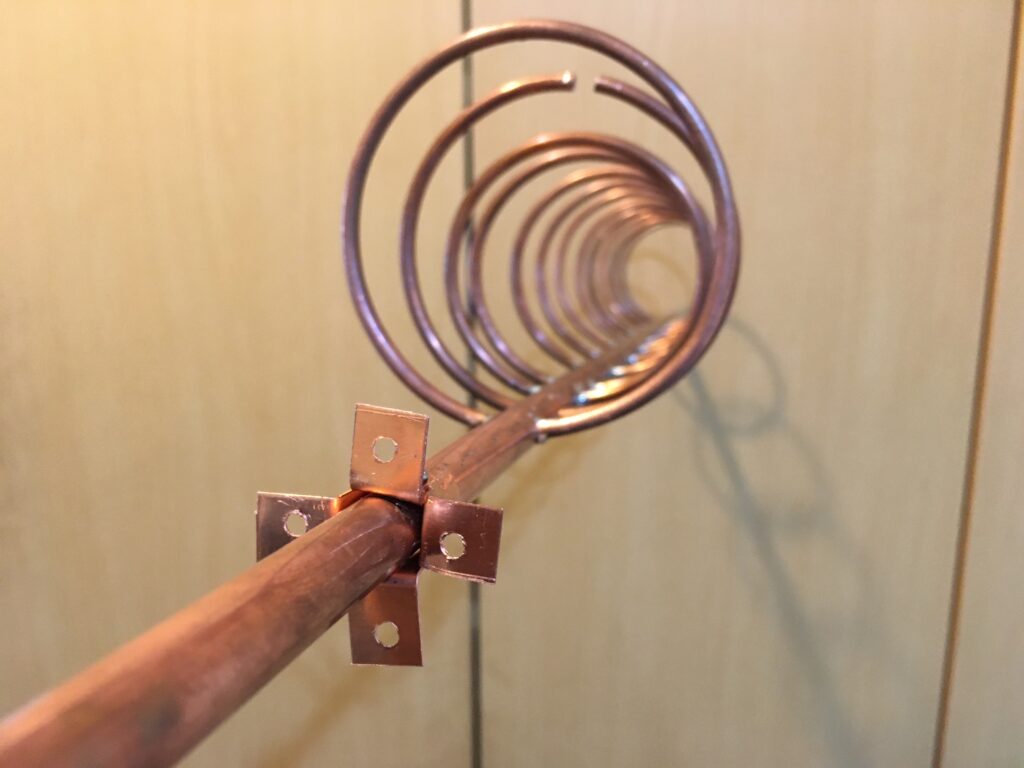

It’s finished.
If both ends of the boom are filled with epoxy glue, there’s no room for flies to get in.